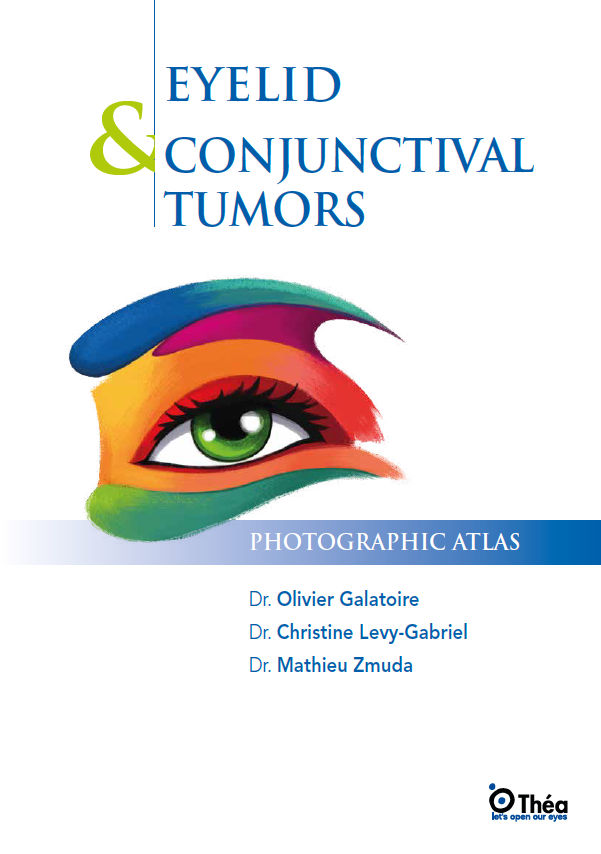
The eyelid and conjunctiva are critical components of the ocular system, performing essential functions such as protecting the eye, regulating corneal hydration, and contributing to eye aesthetics. Periocular tumors can be benign or malignant, originating from various tissues within the eyelid or conjunctiva. Due to the delicate and exposed nature of these tissues, tumors in these regions require careful and often urgent diagnosis and treatment to prevent serious complications.
Benign tumors in the eyelid and conjunctiva include a diverse range of lesions, characterized by their histological origin and clinical presentation. Common benign tumors include molluscum contagiosum, seborrheic keratosis, chalazion, trichofolliculoma, and nevus. These tumors often present as small, painless lesions that may cause discomfort or cosmetic concerns. While many benign tumors do not pose significant health risks, their accurate diagnosis is crucial to differentiate them from malignant counterparts and to ensure appropriate management.
- Eyelid tumors: Molluscum contagiosum and seborrheic keratosis are viral and epithelial in origin, respectively, and are typically treated with simple surgical excision or cryotherapy.
- Conjunctival tumors: Nevus and papilloma are common benign conjunctival tumors that may require excision if symptomatic or for cosmetic reasons.
Malignant tumors of the eyelid and conjunctiva are of significant concern in ocular oncology due to their potential for local invasion and metastasis. These tumors include basal cell carcinoma, squamous cell carcinoma, sebaceous carcinoma, and malignant melanoma. Early tumor diagnosis and treatment are imperative to prevent severe outcomes, including loss of vision and spread to other organs.
- Basal cell carcinoma: This is the most common malignant eyelid tumor, characterized by its nodular or ulcerated appearance. Although rarely metastatic, it requires complete surgical excision to prevent local recurrence.
- Squamous cell carcinoma: This aggressive tumor can present as erythematous, scaly lesions and has a higher metastatic potential, necessitating prompt surgical treatment and possible adjuvant therapies.
- Melanoma: Conjunctival melanoma is a highly malignant tumor with a significant risk of metastasis. Treatment involves extensive surgical excision and adjuvant radiotherapy.
Accurate diagnosis of eyelid and conjunctival tumors relies on a combination of clinical examination, imaging, and histopathological analysis. Biopsy remains the gold standard for definitive diagnosis, allowing for the characterization of tumors and the determination of their benign or malignant nature.
- Clinical examination: Visual inspection, palpation, and slit-lamp examination are essential first steps in assessing tumor characteristics.
- Imaging: Techniques such as Doppler ultrasound, MRI, and CT scans provide detailed images of tumor extent and involvement.
- Histopathological analysis: Biopsies, including incisional and excisional biopsies, are crucial for microscopic examination and precise diagnosis.
Surgical treatment varies depending on the tumor type and its location. Benign tumors often require minor surgical procedures, whereas malignant tumors may necessitate more extensive surgical resection, including Mohs micrographic surgery for precise margin control.
Post-treatment management is critical to monitor for recurrence and manage any complications. Regular follow-up visits, including clinical examinations and imaging, are necessary to ensure complete tumor removal and to detect any signs of recurrence early. Adjuvant therapies, such as radiotherapy or chemotherapy, may be required for malignant tumors to reduce the risk of recurrence.
Key takeaways for managing eyelid and conjunctival tumors include:
- Early diagnosis: Prompt identification and characterization of tumors are essential for successful treatment outcomes.
- Accurate differentiation: Distinguishing between benign and malignant lesions ensures appropriate and timely intervention.
- Comprehensive treatment: Combining surgical excision with appropriate adjuvant therapies maximizes the chances of complete tumor removal and reduces recurrence rates.
- Regular monitoring: Ongoing follow-up is crucial to detect any recurrence early and manage potential complications.
Eyelid and conjunctival tumors present a diverse and complex range of pathologies requiring specialized knowledge for accurate diagnosis and effective treatment. With advancements in diagnostic techniques and surgical interventions, tumor management and eyelid surgery continue to improve, offering better outcomes for patients in ocular oncology.
